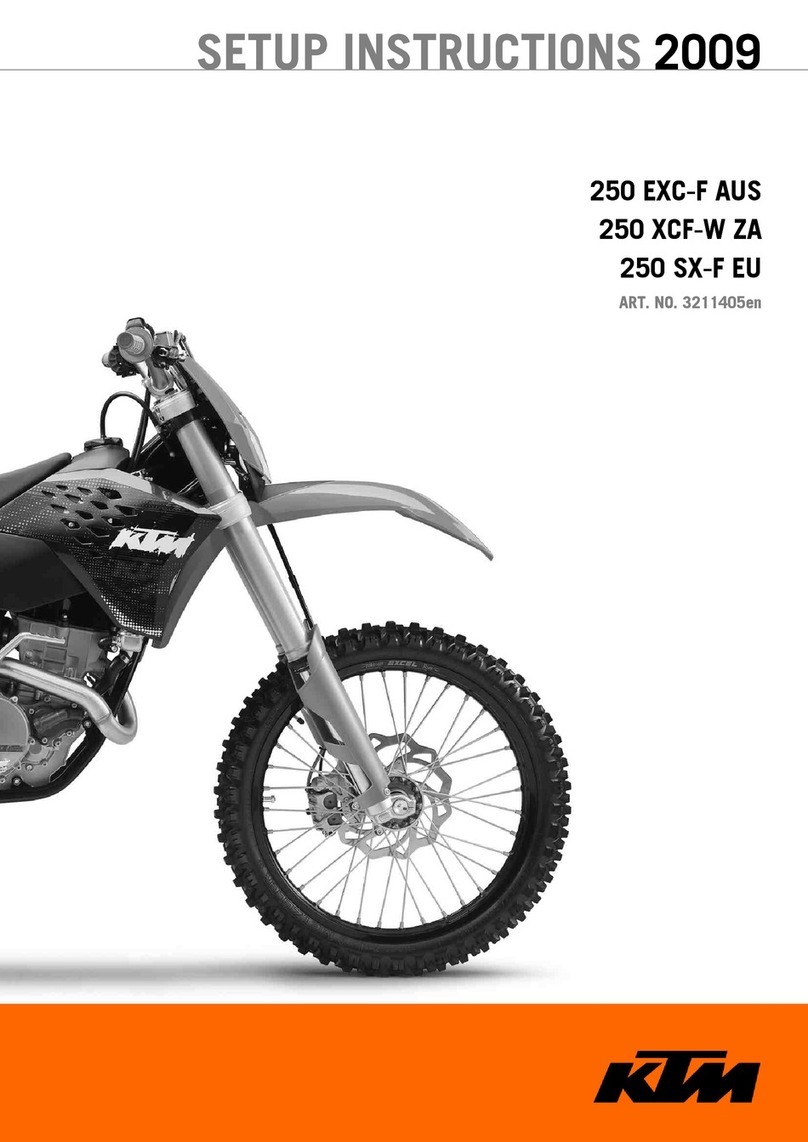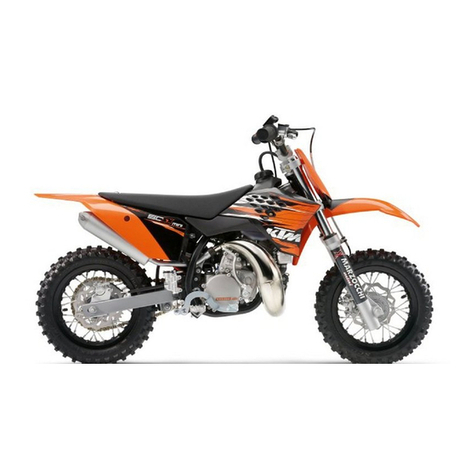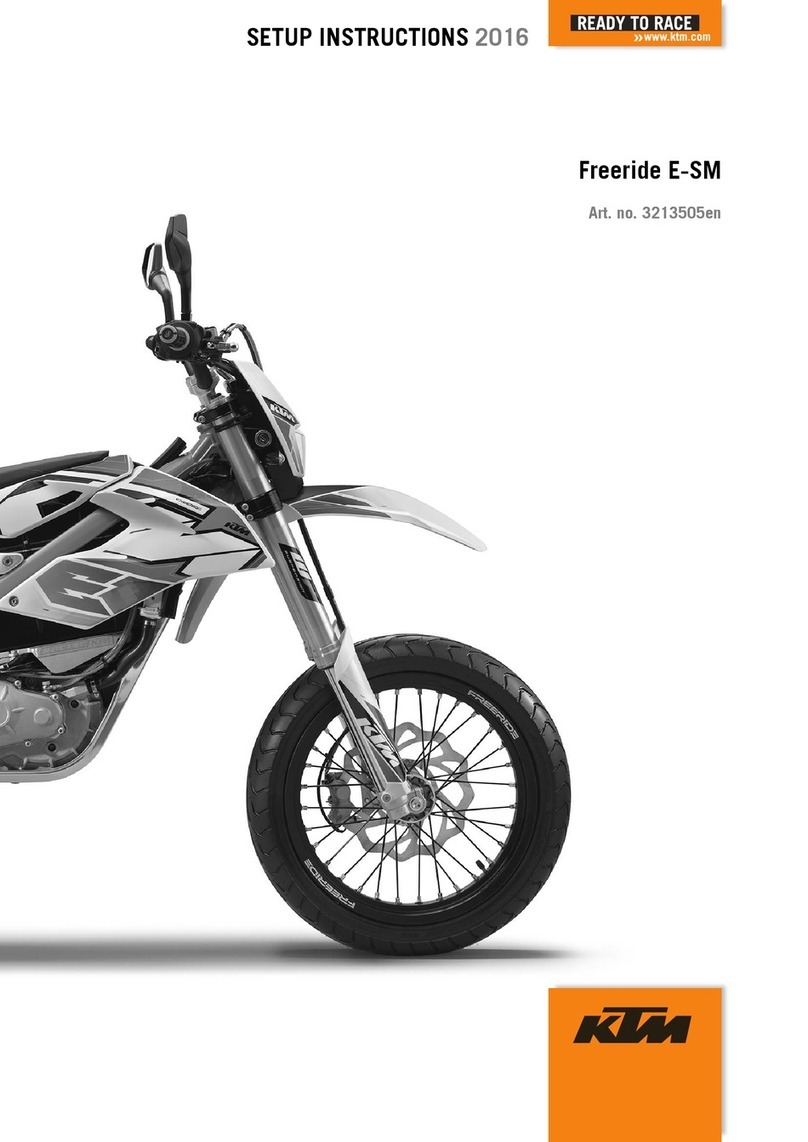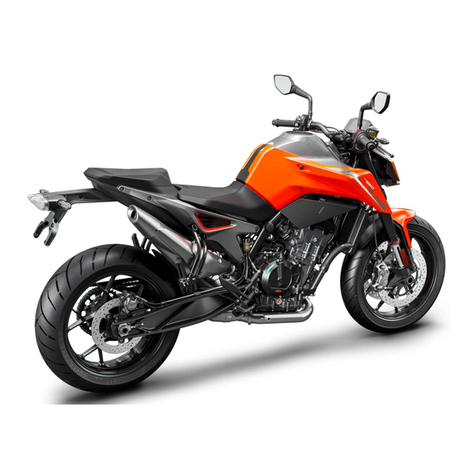KTM 125 SX 2016 Manual
Other KTM Motorcycle manuals
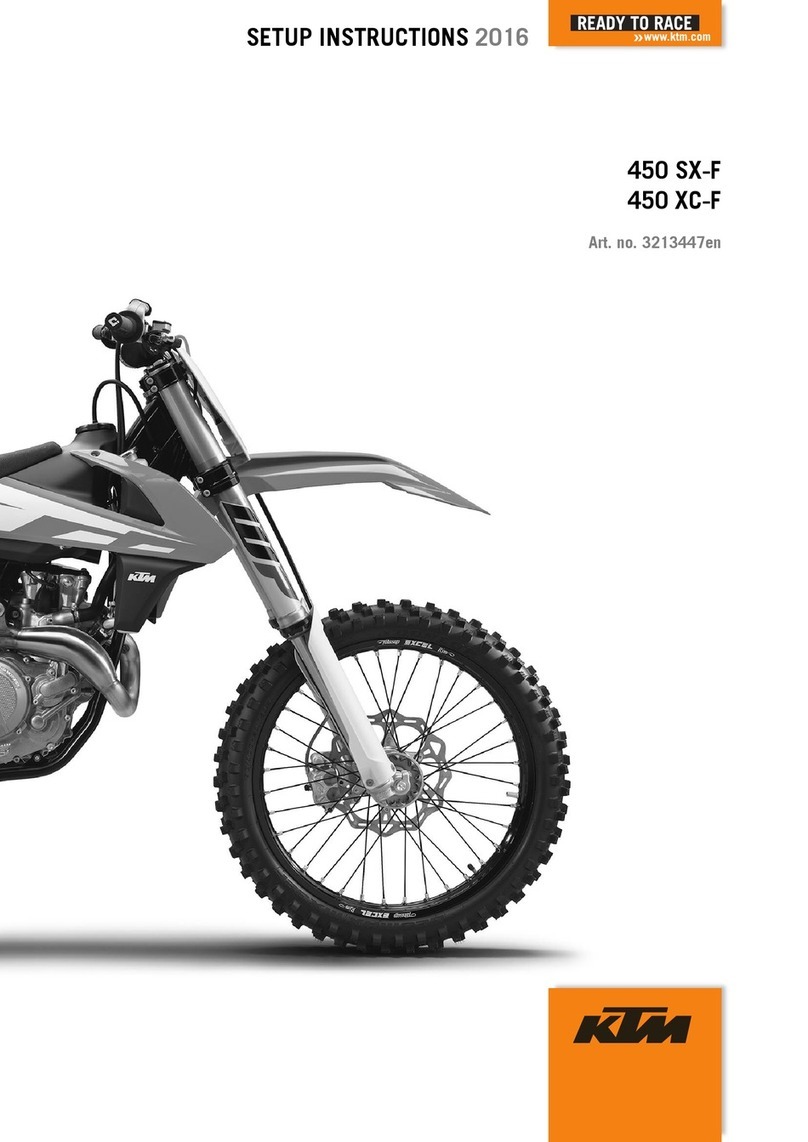
KTM
KTM 450 SX-F 2016 Manual

KTM
KTM 640 LC4 SUPERMOTO 2003 User manual
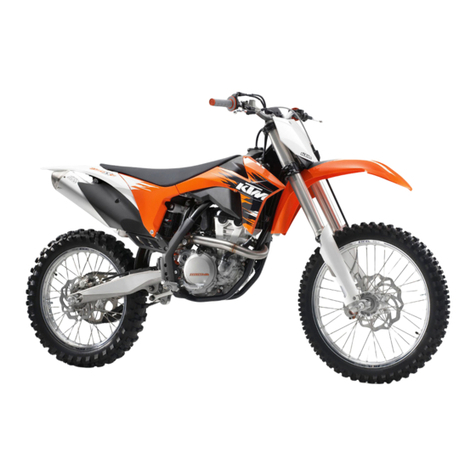
KTM
KTM 350 SX-F Cairoli replica User manual

KTM
KTM 390 DUKE 2021 User manual
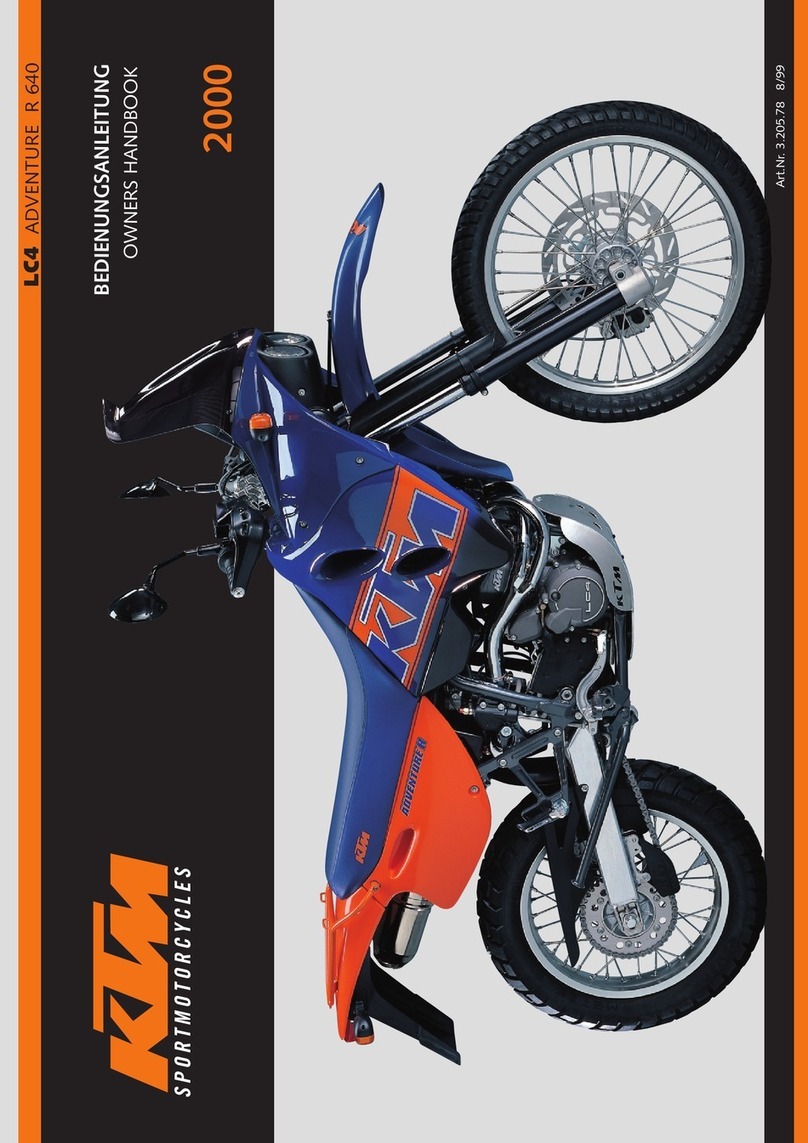
KTM
KTM LC4 ADVENTURE R 640 2000 User guide
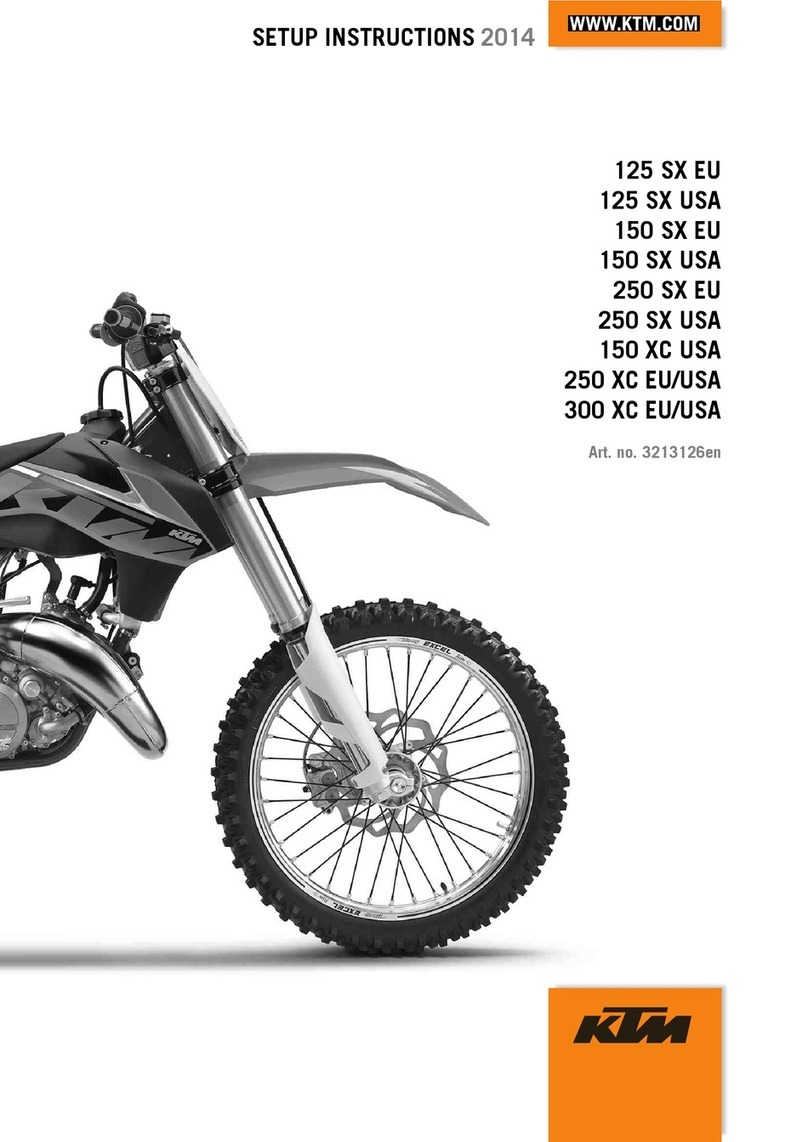
KTM
KTM 125 SX EU 2014 Manual
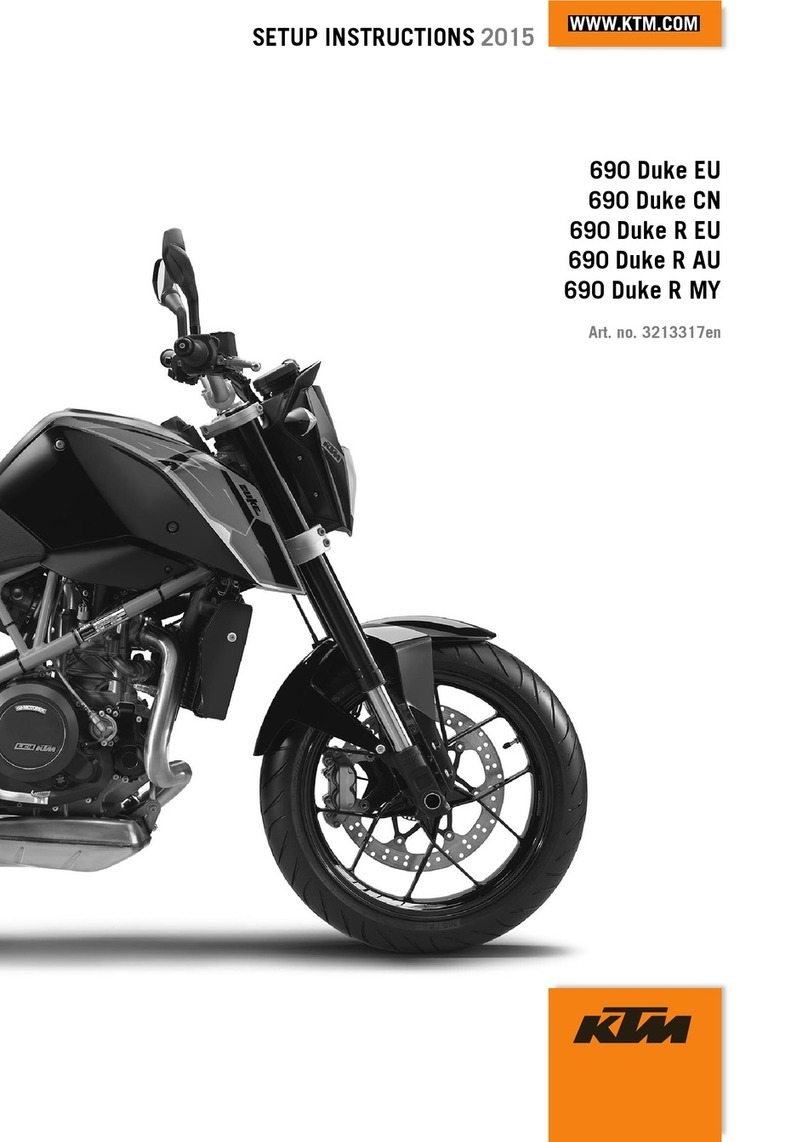
KTM
KTM 690 Duke EU 2015 Manual
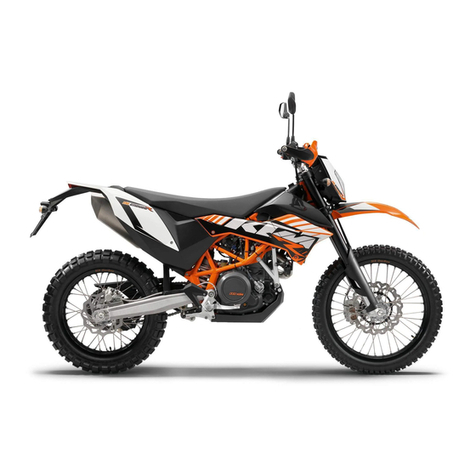
KTM
KTM 690 Enduro R EU 2012 Operating instructions
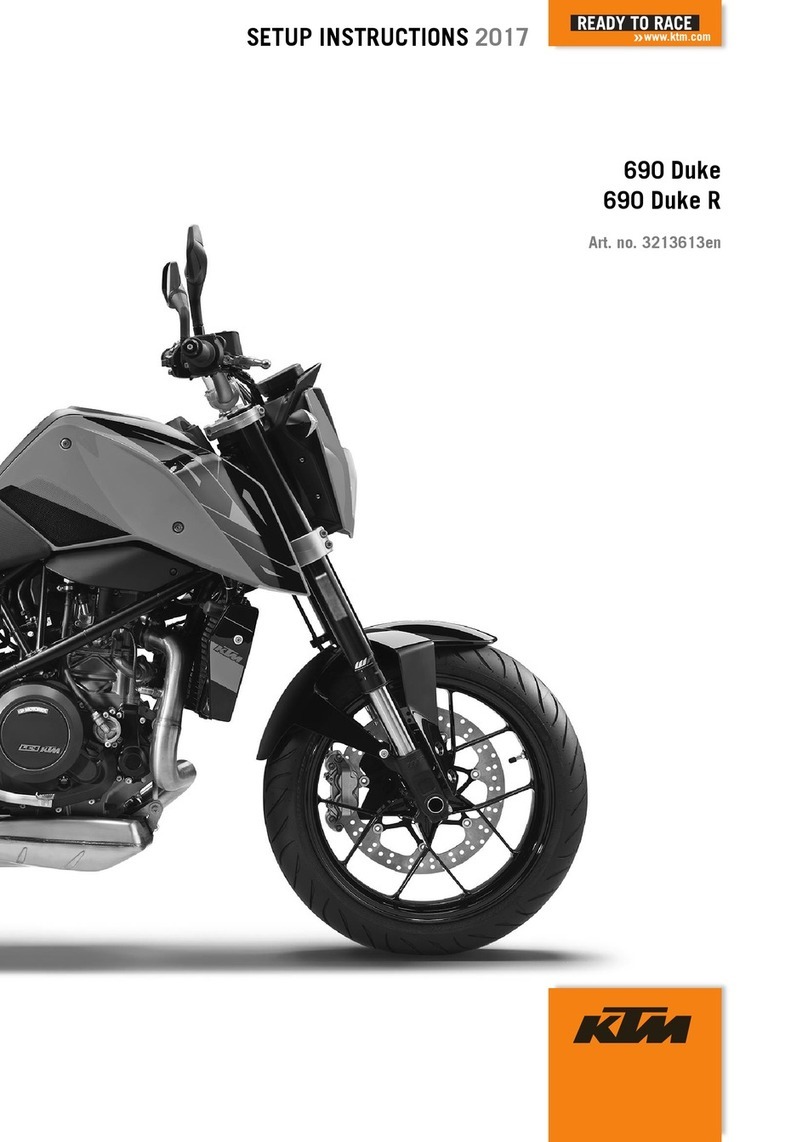
KTM
KTM 690 Duke EU 2017 Manual
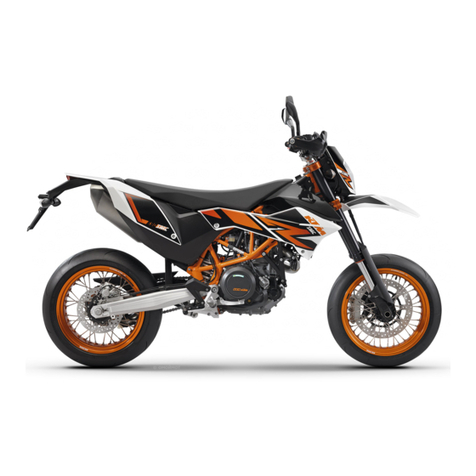
KTM
KTM 690 SMC R Manual
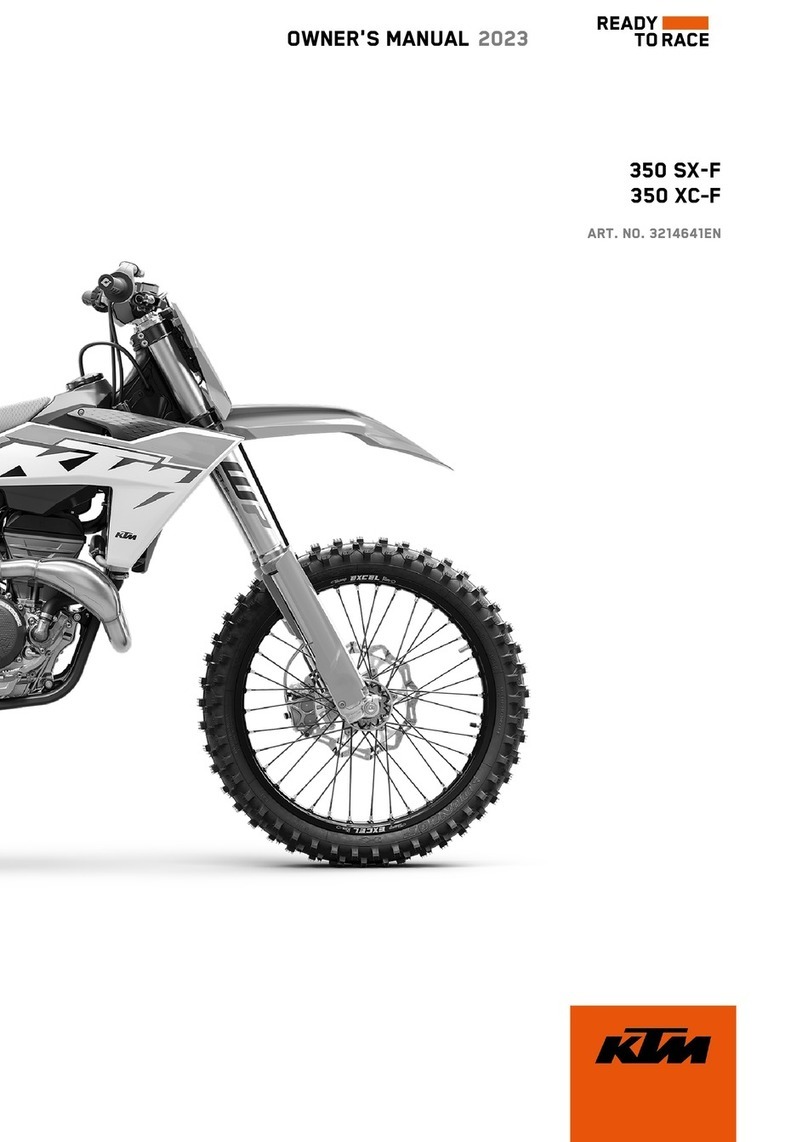
KTM
KTM F8201W5 User manual

KTM
KTM 250 SX 2010 User manual
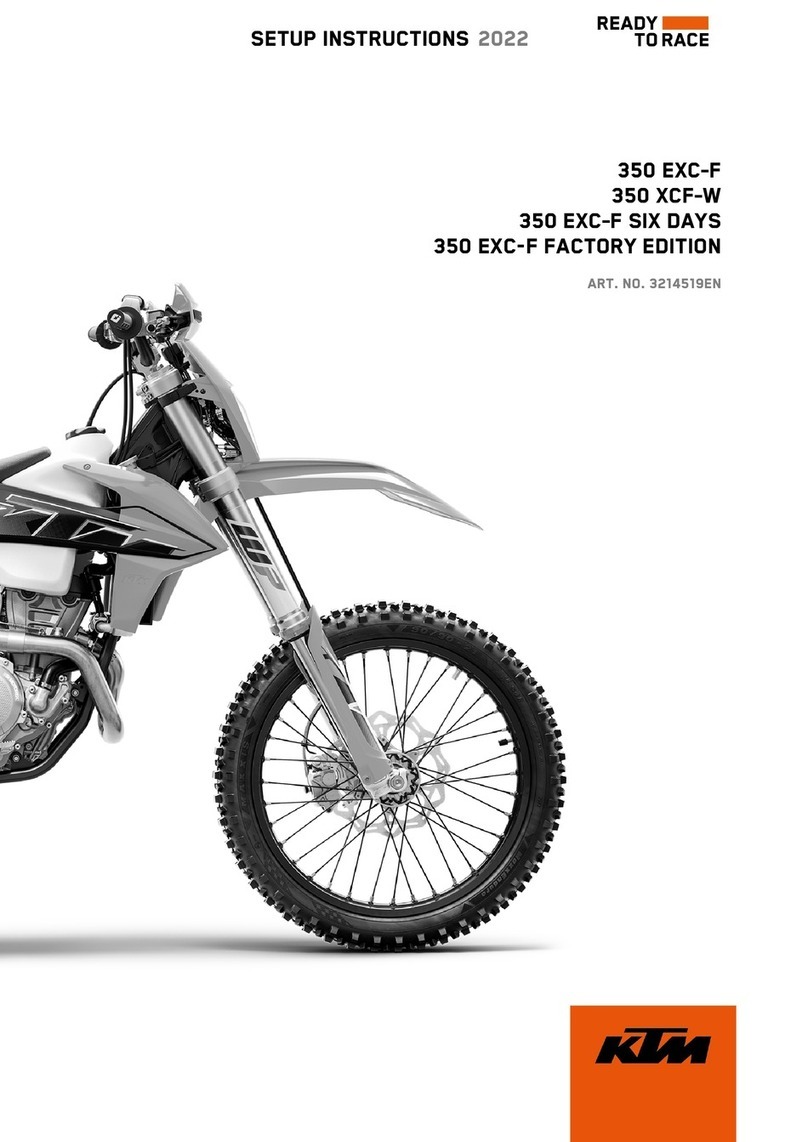
KTM
KTM 350 EXC-F 2022 Manual
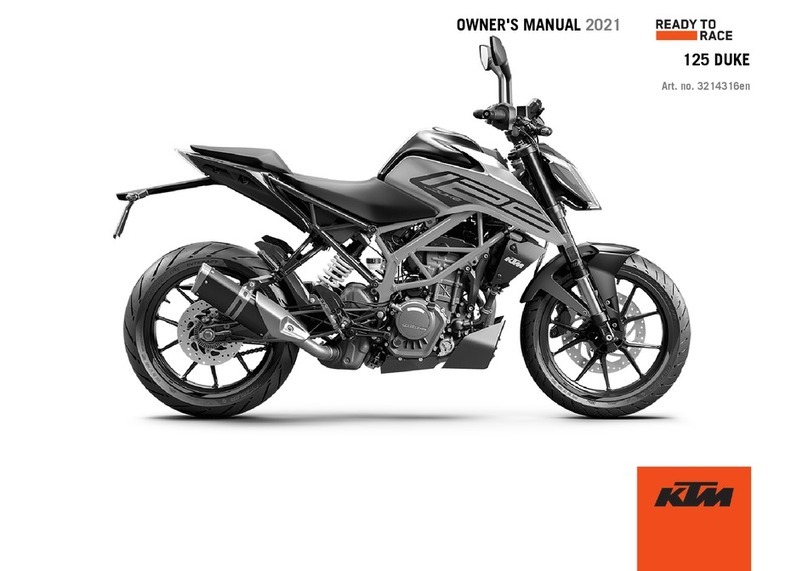
KTM
KTM 125 DUKE 2021 User manual

KTM
KTM 990 SUPERMOTO 2008 User manual

KTM
KTM 450 EXC-F 2023 User manual

KTM
KTM 660 SMC 2003 User manual

KTM
KTM 990 Supermoto R EU 2013 Manual
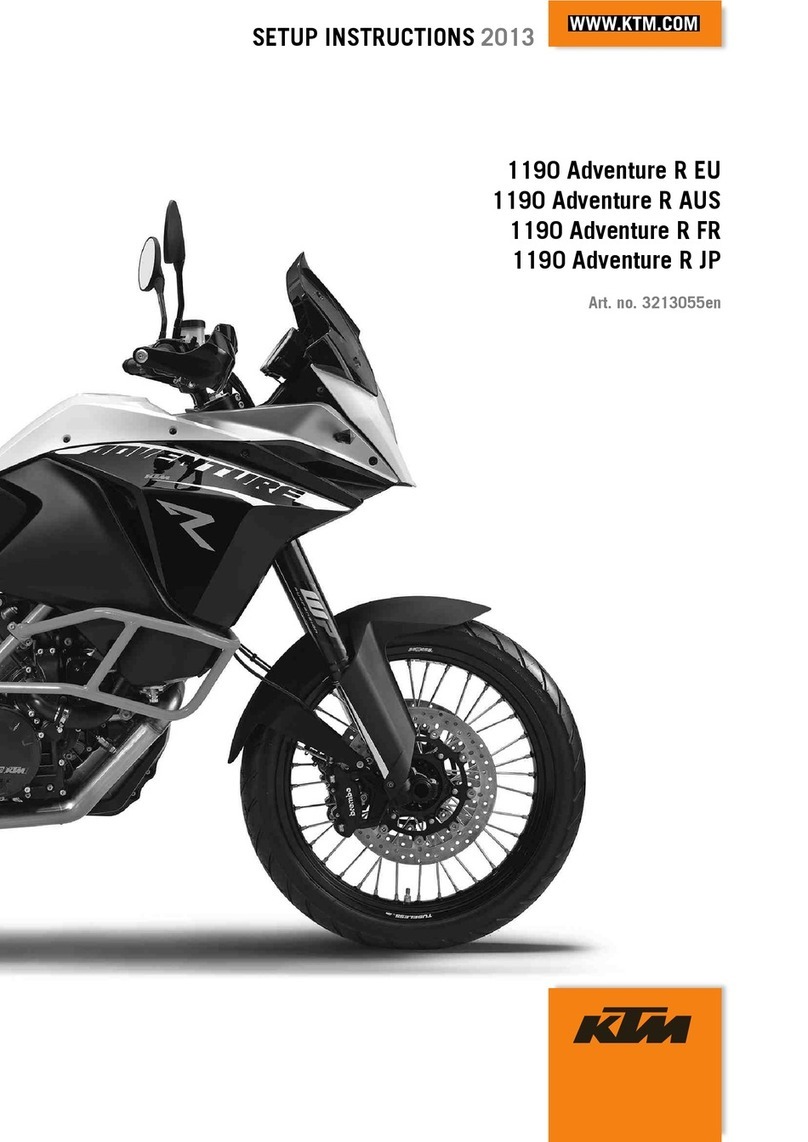
KTM
KTM 1190 Adventure R EU 2013 Manual
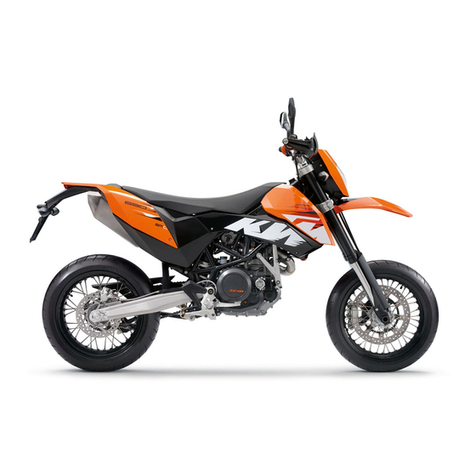
KTM
KTM 690 SMC EU User manual
Popular Motorcycle manuals by other brands

MV Agusta
MV Agusta Brutale 675 Workshop manual

APRILIA
APRILIA RSV MILLE - PART 1 1999 User manual content

Royal Enfield
Royal Enfield Himalayan 2018 owner's manual

SSR Motorsports
SSR Motorsports Lazer5 owner's manual

MOTO GUZZI
MOTO GUZZI 2005 Griso 1100 Use and maintenance book

Beta Motorcycles
Beta Motorcycles XTRAINER 250 2T EUROPA 2022 manual
